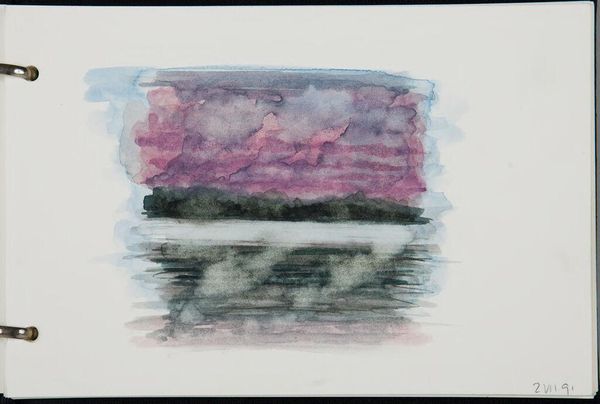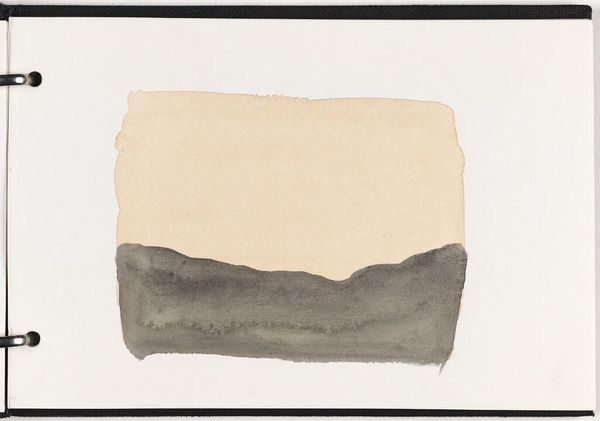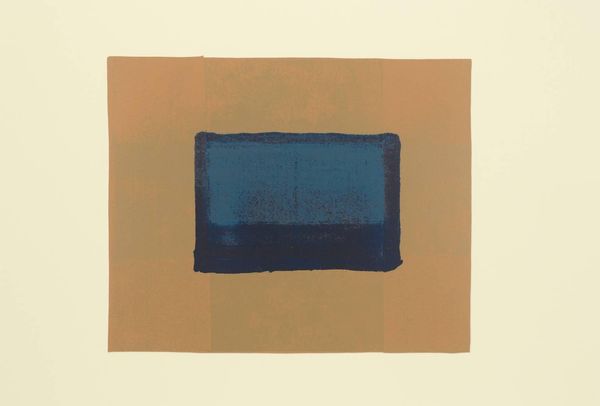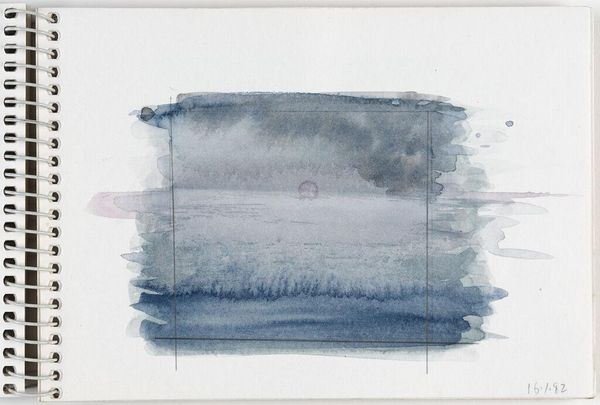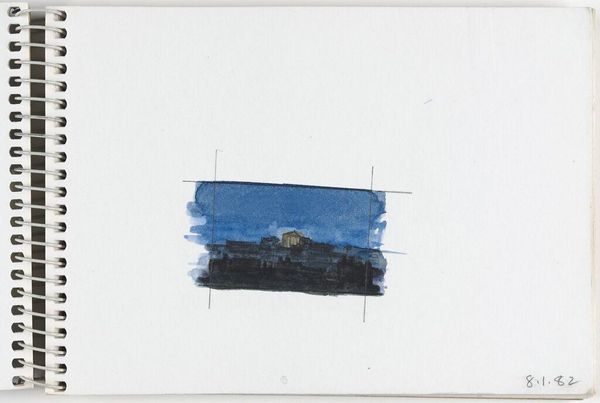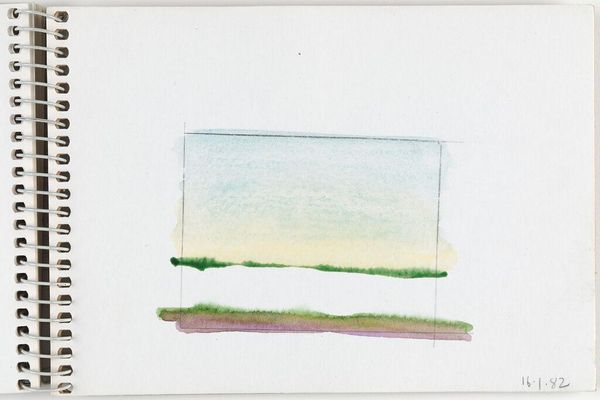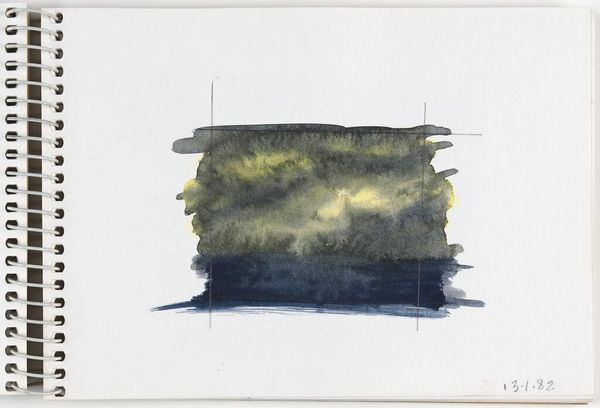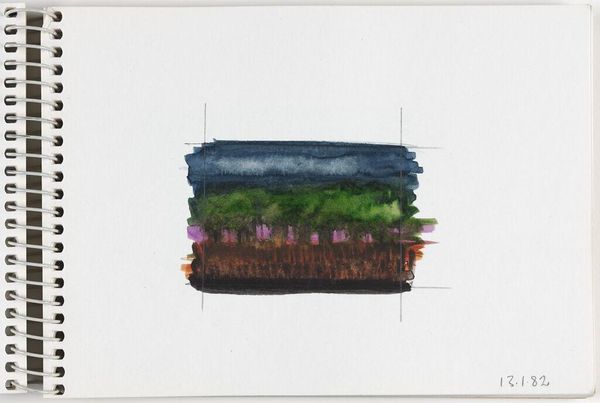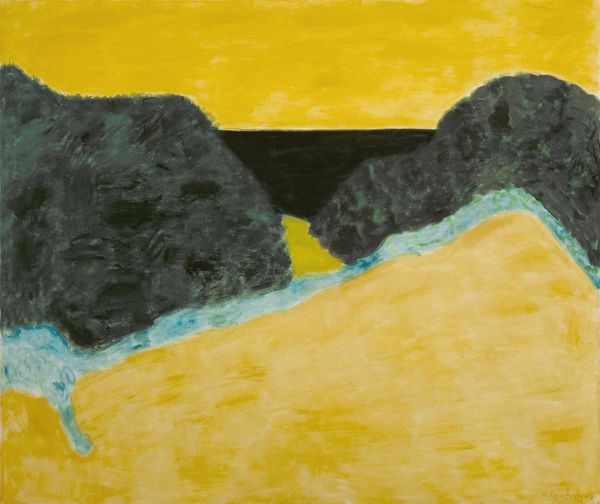
drawing, print
#
drawing
#
water colours
# print
#
geometric
#
abstraction
Copyright: Howard Hodgkin,Fair Use
Editor: This is an untitled print by Howard Hodgkin from 1976. I'm struck by how simple it is. The geometric forms floating within that hazy blue almost feel like a half-remembered landscape. What do you see in this piece? Curator: I see a coded memory, a landscape of the psyche rendered through simplified forms. Notice the arrangement: earth-toned rectangle above, then a sinuous band of blue suggestive of water. Beneath that, a block of white—potential? Absence? Hodgkin’s abstraction speaks to a visual shorthand where simple shapes become vessels of collective meaning. The colors themselves – that soft blue, the earthy browns – are emotionally resonant. They conjure specific places and times even without depicting them literally. Do these color choices elicit any associations for you? Editor: They make me think of childhood summers, the colors of old vacation photos faded with time. But why this kind of coded imagery? Curator: It's about tapping into shared experiences and memories. Hodgkin understands that certain visual symbols resonate across cultures and generations. The layering of shapes, the choice of colors – these elements work together to create an image that is both personal and universal, echoing the cultural memory of idealized landscapes. The way it's a print, too, makes it interesting; like he's making the memory reproducible, to spread the iconography. Editor: That makes me appreciate how intentional the abstraction really is. Thanks for shedding some light on all those different layers of meaning. Curator: My pleasure. Art often speaks in a symbolic language we need to learn to decipher. There’s a unique kind of power in the image. We are given the symbols that unlock cultural memory and history in our minds.
Comments
No comments
Be the first to comment and join the conversation on the ultimate creative platform.

